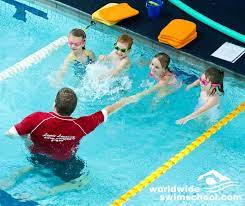Every child remembers the first time they held their breath underwater. For many, that memory is a mix of excitement and uncertainty. Now imagine being the one who helped them feel safe, taught them how to float, and gave them the confidence to swim. That’s what a good swimming coach does — and it all starts with a solid foundation through a certified water safety course.
Whether you’re considering a career change, looking to turn your passion for the pool into a profession, or hoping to support your community with essential life skills, here’s what you need to know about becoming a swimming coach through proper water safety training.
Why Water Safety Education Matters — Especially in Australia
Australia’s stunning coastline and culture of beachgoing come with risks that can’t be ignored. In the 2023–2024 summer period, over 280 drowning incidents were reported across the country — many involving people who lacked basic water survival skills.
A water safety course helps prevent such tragedies. These courses teach the science of safe swimming, rescue techniques, and how to respond to real-world emergencies. But they also do more — they prepare future coaches to educate others with clarity, calm, and confidence.
What You’ll Learn in a Water Safety Course
A comprehensive water safety training program isn’t just about treading water or counting laps. The real focus is on education, supervision, and rescue readiness.
Here’s a breakdown of the most critical components:
- Understanding Water Risks
Learn how to assess different aquatic environments — from public pools to rivers, lakes, and beaches — and identify the dangers unique to each. - Teaching Techniques for All Ages
Courses show you how to teach infants through to adults. You’ll develop lesson plans, modify teaching styles for age and ability, and manage group dynamics in and around water. - Rescue and First Aid Skills
From basic reach-and-throw rescues to performing CPR on a child or adult, the program ensures you’re equipped to act in high-pressure situations. - Risk Management and Supervision
You’ll study how to maintain a safe learning environment, including pool supervision, emergency planning, and legal responsibilities.
This practical knowledge forms the backbone of any water safety course and sets you up for success as a coach.
From Trainee to Trusted Swimming Coach
Becoming a swimming coach is about more than just qualifications — it’s about being a mentor, a motivator, and a safety role model.
Most coaching journeys begin by completing a nationally recognised certification through a registered training organisation. This might include supervised hours in the water, theoretical assessments, and a final evaluation with a certified assessor.
Once certified, new instructors often start by assisting senior coaches. This gives them a real-world understanding of lesson pacing, dealing with nervous learners, and fine-tuning communication skills.
Many coaches also continue their education, branching into specialist areas like infant aquatics, stroke correction, or disability swim instruction. Staying updated through ongoing professional development is a must in this line of work.
Common Traits of Great Swimming Coaches
Not every strong swimmer makes a good teacher. Here are some of the qualities that set great coaches apart:
- Patience and Positivity
Teaching water safety takes time, especially with children or nervous swimmers. Encouragement and patience are essential. - Strong Communication
You need to explain complex ideas simply and offer clear guidance during drills or emergencies. - Situational Awareness
The best coaches constantly monitor their surroundings — from student behaviour to poolside hazards. - Physical Fitness
Demonstrating strokes, diving, and performing rescues all require good health and stamina. - A Growth Mindset
Feedback, both given and received, helps good coaches improve every day.
The Broader Impact of Water Safety Education
Water safety coaches don’t just teach swimming — they save lives, build community confidence, and encourage lifelong healthy habits.
According to the Royal Life Saving Society Australia, teaching children water safety from a young age significantly reduces drowning risks and promotes better decision-making around water as they grow.
Swimming also supports physical fitness, mental health, and social inclusion — particularly for children and people with disabilities.
By choosing to enrol in a water safety course, you become part of a national effort to protect lives and promote wellbeing through water education.
Final Thoughts: Take the First Step Into the Pool
Australia needs more passionate, well-trained swimming coaches. With the right qualifications, a clear sense of purpose, and a willingness to keep learning, you can become the person who makes the water a safe, empowering space for everyone.
If you’ve ever thought about working in aquatics or felt the call to give back to your community in a meaningful way, consider beginning with a water safety course. Your impact might reach further than you ever imagined — one safe swimmer at a time.

